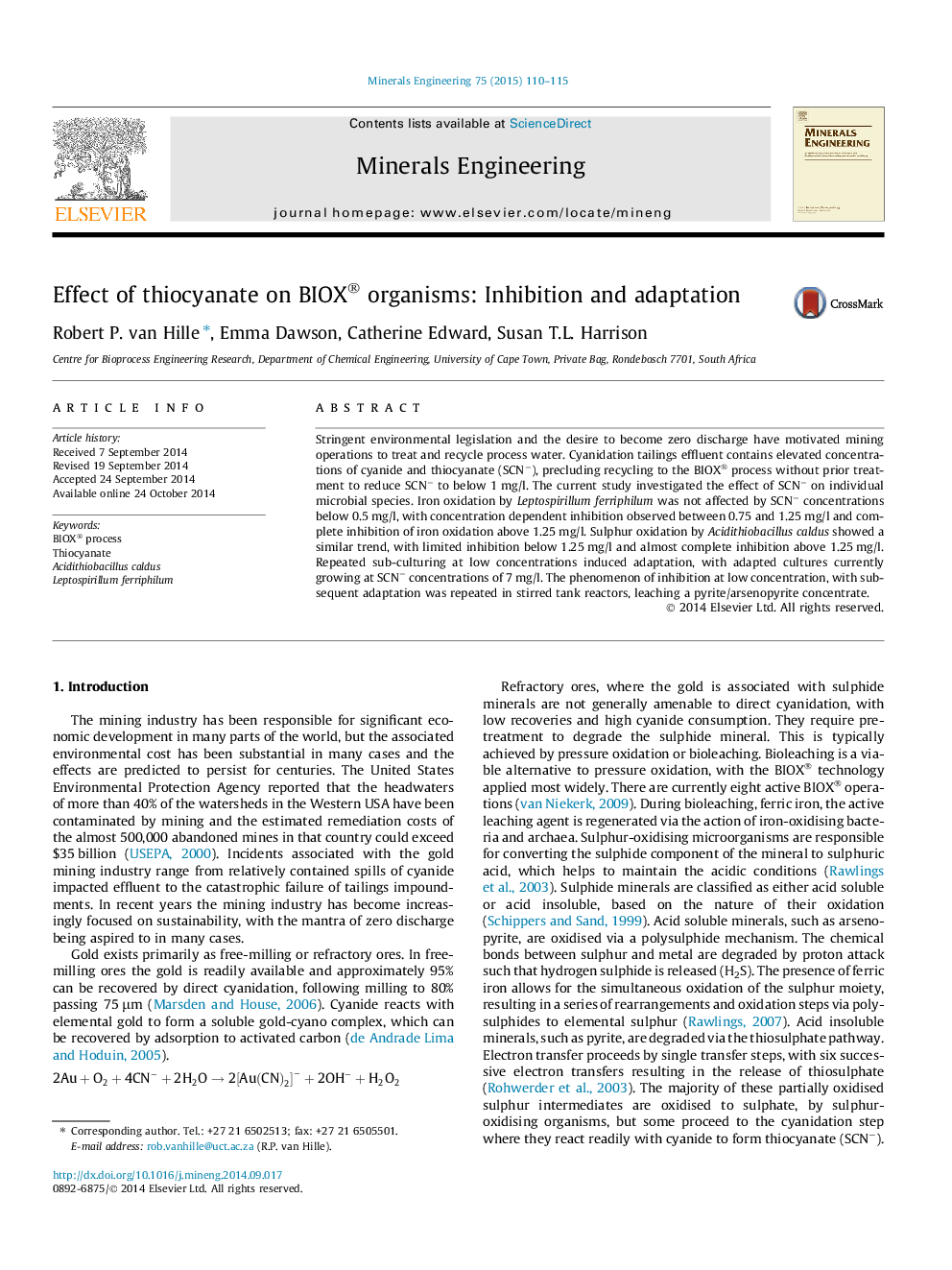| Article ID | Journal | Published Year | Pages | File Type |
|---|---|---|---|---|
| 232979 | Minerals Engineering | 2015 | 6 Pages |
•Effect of SCN− on two key bioleaching species was evaluated.•At. caldus and L. ferriphilum significantly inhibited at concentrations above 1.25 mg/l.•Performance in simulated bioleaching tank significantly affected above 2 mg/l.•At. caldus adapted to grow in 7 mg/l SCN following incremental addition over six months.
Stringent environmental legislation and the desire to become zero discharge have motivated mining operations to treat and recycle process water. Cyanidation tailings effluent contains elevated concentrations of cyanide and thiocyanate (SCN−), precluding recycling to the BIOX® process without prior treatment to reduce SCN− to below 1 mg/l. The current study investigated the effect of SCN− on individual microbial species. Iron oxidation by Leptospirillum ferriphilum was not affected by SCN− concentrations below 0.5 mg/l, with concentration dependent inhibition observed between 0.75 and 1.25 mg/l and complete inhibition of iron oxidation above 1.25 mg/l. Sulphur oxidation by Acidithiobacillus caldus showed a similar trend, with limited inhibition below 1.25 mg/l and almost complete inhibition above 1.25 mg/l. Repeated sub-culturing at low concentrations induced adaptation, with adapted cultures currently growing at SCN− concentrations of 7 mg/l. The phenomenon of inhibition at low concentration, with subsequent adaptation was repeated in stirred tank reactors, leaching a pyrite/arsenopyrite concentrate.
